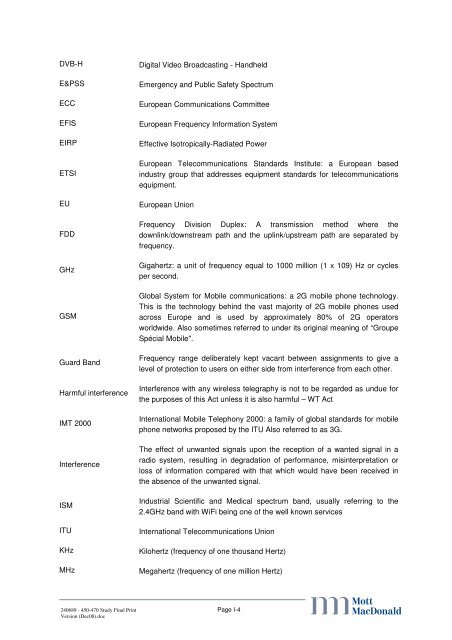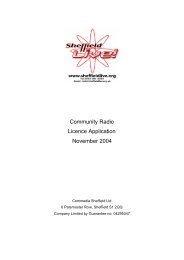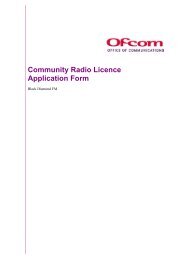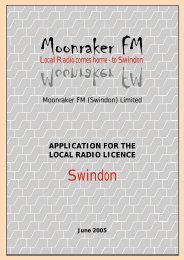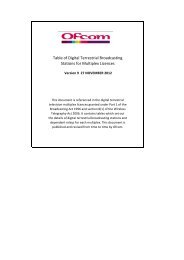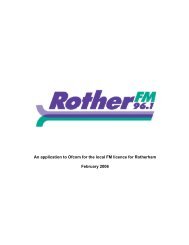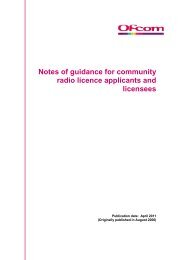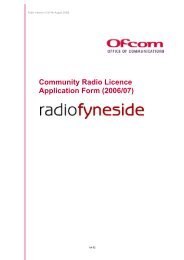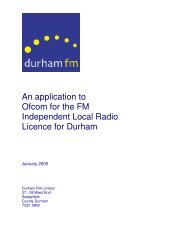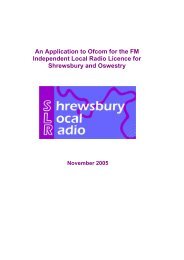UHF2 realignment study - Ofcom Licensing
UHF2 realignment study - Ofcom Licensing
UHF2 realignment study - Ofcom Licensing
You also want an ePaper? Increase the reach of your titles
YUMPU automatically turns print PDFs into web optimized ePapers that Google loves.
DVB-H Digital Video Broadcasting - Handheld<br />
E&PSS Emergency and Public Safety Spectrum<br />
ECC European Communications Committee<br />
EFIS European Frequency Information System<br />
EIRP Effective Isotropically-Radiated Power<br />
ETSI<br />
EU European Union<br />
FDD<br />
GHz<br />
GSM<br />
Guard Band<br />
Harmful interference<br />
IMT 2000<br />
Interference<br />
ISM<br />
240689 - 450-470 Study Final Print<br />
Version (Dec08).doc<br />
European Telecommunications Standards Institute: a European based<br />
industry group that addresses equipment standards for telecommunications<br />
equipment.<br />
Frequency Division Duplex: A transmission method where the<br />
downlink/downstream path and the uplink/upstream path are separated by<br />
frequency.<br />
Gigahertz: a unit of frequency equal to 1000 million (1 x 109) Hz or cycles<br />
per second.<br />
Global System for Mobile communications: a 2G mobile phone technology.<br />
This is the technology behind the vast majority of 2G mobile phones used<br />
across Europe and is used by approximately 80% of 2G operators<br />
worldwide. Also sometimes referred to under its original meaning of “Groupe<br />
Spécial Mobile".<br />
Frequency range deliberately kept vacant between assignments to give a<br />
level of protection to users on either side from interference from each other.<br />
Interference with any wireless telegraphy is not to be regarded as undue for<br />
the purposes of this Act unless it is also harmful – WT Act<br />
International Mobile Telephony 2000: a family of global standards for mobile<br />
phone networks proposed by the ITU Also referred to as 3G.<br />
The effect of unwanted signals upon the reception of a wanted signal in a<br />
radio system, resulting in degradation of performance, misinterpretation or<br />
loss of information compared with that which would have been received in<br />
the absence of the unwanted signal.<br />
Industrial Scientific and Medical spectrum band, usually referring to the<br />
2.4GHz band with WiFi being one of the well known services<br />
ITU International Telecommunications Union<br />
KHz Kilohertz (frequency of one thousand Hertz)<br />
MHz Megahertz (frequency of one million Hertz)<br />
Page I-4<br />
abc


